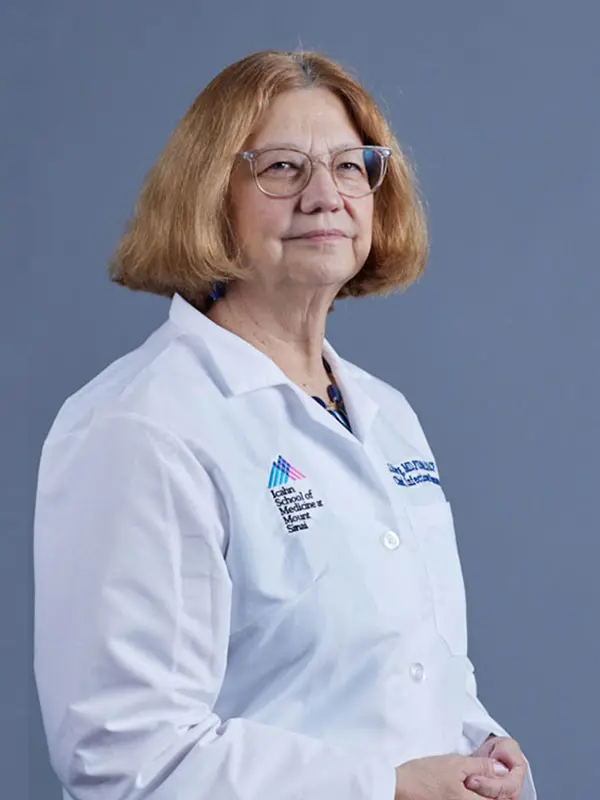Related Article
The Mount Sinai Hospital’s Transplant Infectious Diseases (ID) Program, already one of the nation’s largest with eight clinical faculty members, is building on its success with a streamlined fellowship track as well as a significant expansion in transplant ID clinical teams and services.
“What we do is prevent, manage, and treat infections in the immunocompromised host—we have special expertise in taking care of that particular patient population,” says Meenakshi M. Rana, MD, the Program’s Director and an Associate Professor of Medicine (Infectious Diseases) at the Icahn School of Medicine at Mount Sinai.
Liver, kidney, heart, lung, intestinal, pancreas, and bone marrow transplantation are all available at Mount Sinai. Dr. Rana and colleagues work as an integral part of the multidisciplinary team involved with any such transplant, seeing patients awaiting lung transplantation at the Mount Sinai – National Jewish Health Respiratory Institute and those awaiting abdominal organ transplants at the Recanati/Miller Transplantation Institute.
The importance of transplant ID in the pre-evaluation and clearance of potential transplant patients is vital, as is the care they provide should infectious complications ensue following transplantation.
"Prevention of infection is a particular focus of ours,” Dr. Rana says. “We recommend vaccines, and any history of infections the patient may have had prior to transplant is reviewed. The most common viral infection we see after transplant is cytomegalovirus, so patients are on prophylaxis for several months after transplant to prevent this.”
The growing service now includes three inpatient consult services dedicated to transplant ID. The transplant ID team also has expanded its outpatient ambulatory care, Dr. Rana says: “We provide ambulatory care, co-located with their underlying condition, and we see patients in the general ID clinic.”

Top row, left to right: Dhruv Patel, MD; Dallas Dunn, MD; Meenakshi M. Rana, MD; Tim Sullivan, MD.
Bottom row, left to right: Samantha Jacobs, MD; Risa Fuller, MD; Sarah Taimur, MD; Emily Baneman, MD
For HIV Transplant Patients, HOPE
Mount Sinai is one of a select group of transplant centers approved for HOPE Act participation. The HIV Organ Policy Equity Act, enacted in 2013, approved research on organ transplantation between donors and recipients with HIV. The HOPE Act answered a need within the transplant community.
“Patients with HIV are vulnerable to long-term complications of kidney disease and liver disease,” Dr. Rana explains. “For patients with HIV, who generally had longer wait times for transplant, they now had the opportunity to be on two lists: the one with everyone else waiting for a transplant, and a second list for those getting a transplant from a donor with HIV—and that helps shorten their wait time for transplant.” For example, the wait time in New York City might be halved for a kidney from a donor with HIV.
“The HOPE Act allowed us to start doing HIV-to-HIV transplantation in this country, and we have been doing that here as part of clinical research since 2016,” Dr. Rana says. “We have done 126 of these transplants at Mount Sinai, making us one of the largest HIV-to-HIV transplant centers in the country.”
Generally, the donor with HIV is deceased, though living donors with HIV are possible in HIV-to-HIV kidney transplantation. The research program at Mount Sinai also includes deceased-donor HIV-to-HIV liver transplantation. All recipients are on retroviral therapy and have well-controlled HIV with a suppressed viral load. “We have had good outcomes in this patient population,” Dr. Rana says. “Even though these patients have received a kidney or liver from a donor with HIV, their HIV still stays under good control as long as they continue to take their antiretroviral therapy.”
Innovation in Fellowship Training
With the large and growing transplant ID program coupled with the research stemming from the HOPE Act, there is an outstanding opportunity to educate ID fellows at Mount Sinai. The transplant ID team has created an innovative program with a curriculum that folds transplant ID training into its second year, rather than requiring a third year, which is often the case elsewhere.
“Fellows who complete the first year of fellowship who have a special interest in pursuing additional training in care of the immunocompromised host can go on to do extra training during their second year of fellowship, and this involves a few components,” Dr. Rana says. “There’s about four months of extra clinical time on the inpatient side, and then there is also an ambulatory component where they take care of patients in the outpatient transplant ID setting.
“They conduct a research project on infectious disease under the mentorship of a transplant ID faculty member as part of the track,” she says, adding, “Many of our fellows who have completed the track have been able to go on and obtain transplant ID faculty positions at other institutions.”
The explicit purpose of the ID fellowship program is to “educate future academic leaders in our field,” and all evidence points to continued success with this goal.
Featured Faculty and Division Leadership

Meenakshi M. Rana, MD
Associate Professor of Medicine (Infectious Diseases)

Judith Aberg, MD
Dr. George Baehr Professor of Clinical Medicine; Chief, Division of Infectious Diseases
